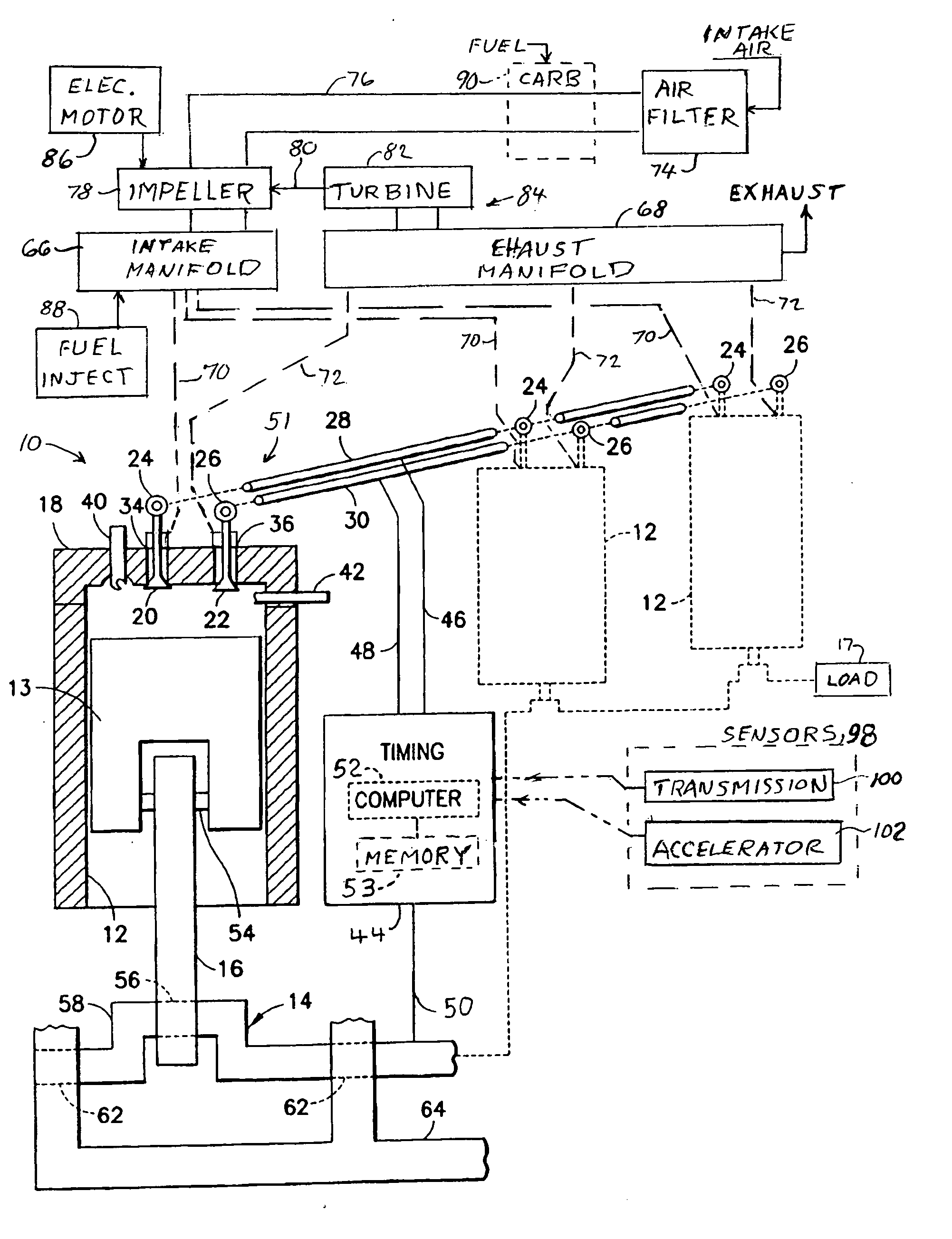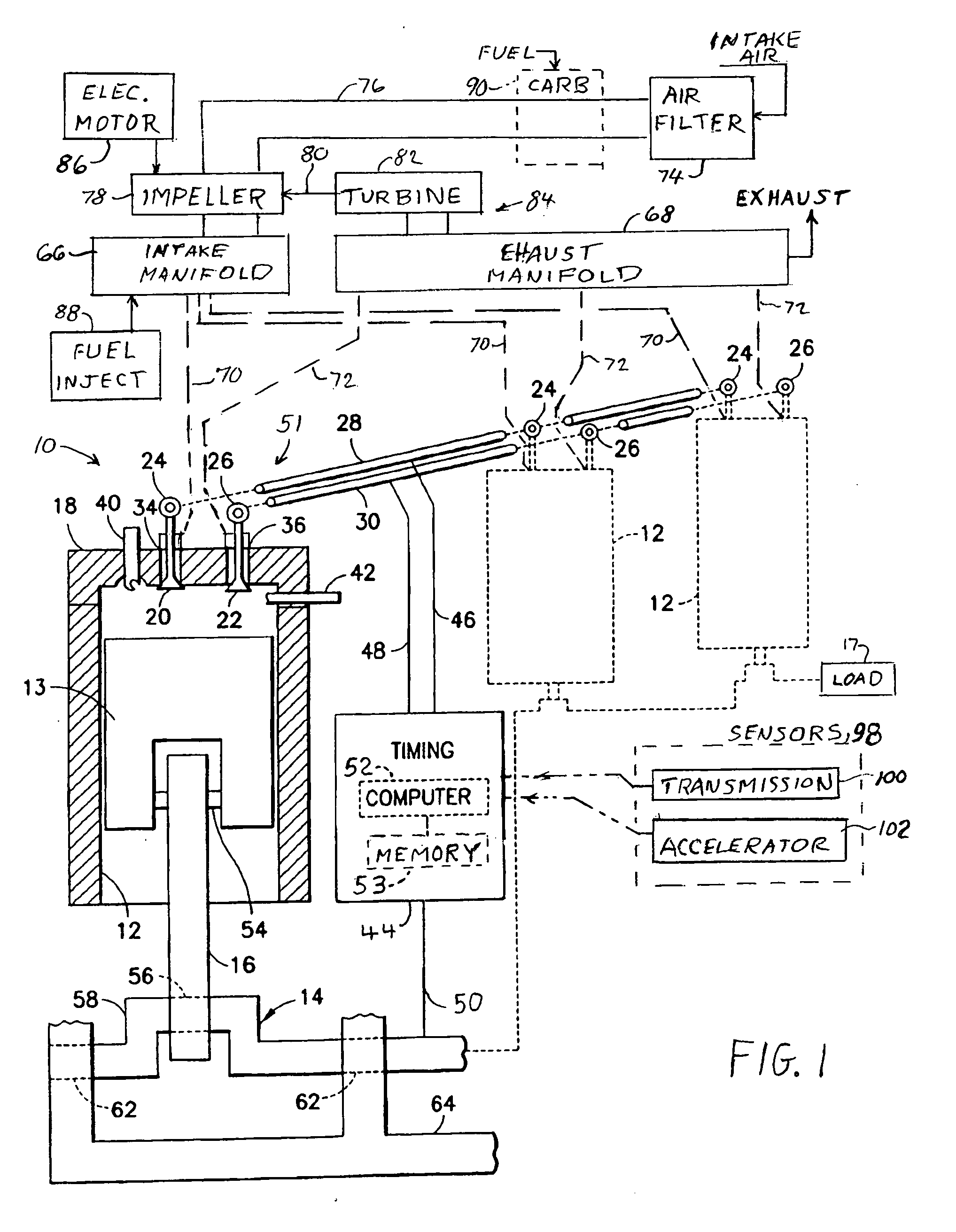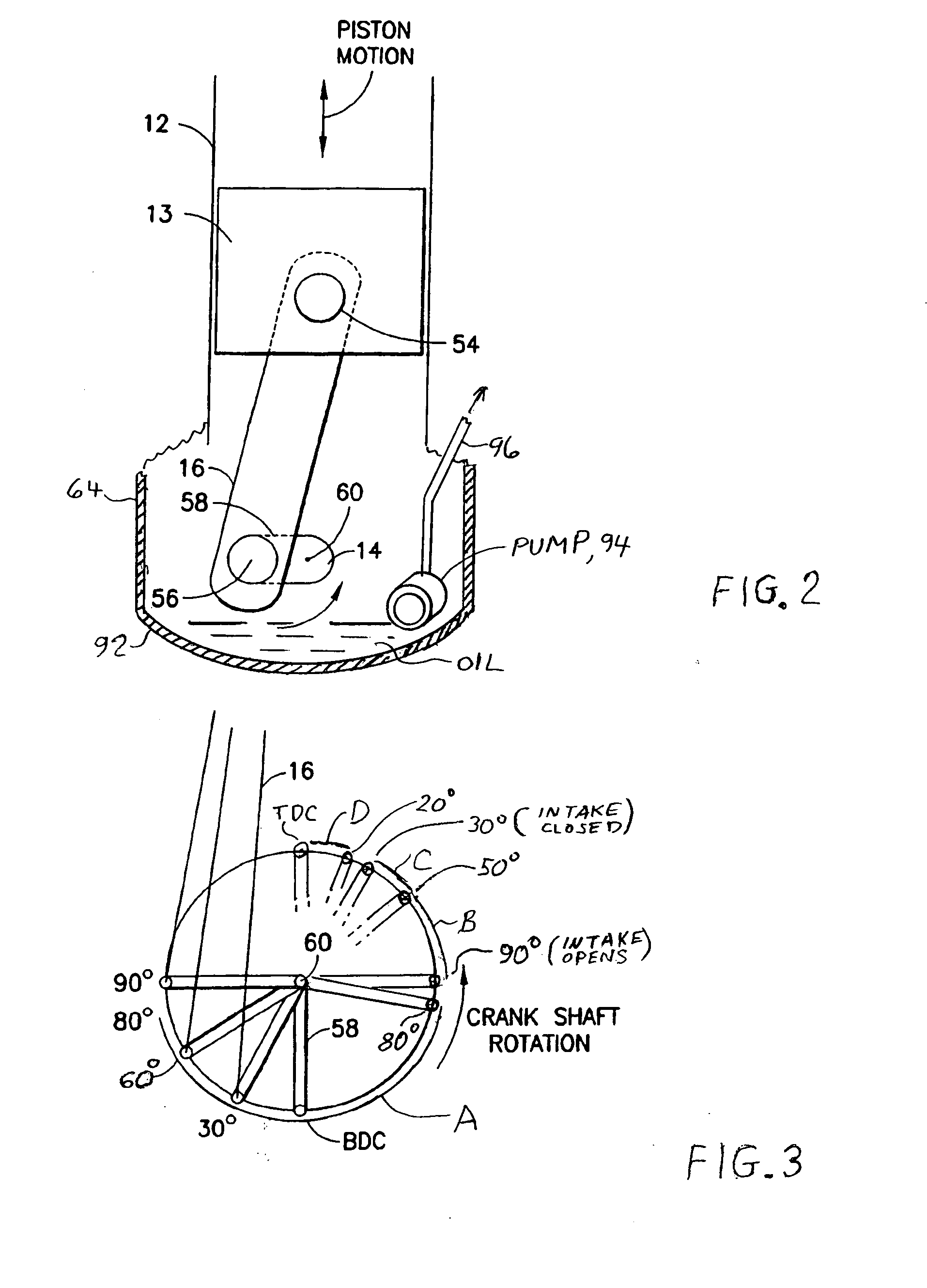Two-stroke internal combustion engine with valves for improved fuel efficiency
a technology of internal combustion engine and valve, which is applied in the direction of machines/engines, output power, mechanical apparatus, etc., can solve the problems of small decrease in compression stroke compression, significant energy waste, and inability to reach the full potential of the engine, and achieve the effect of small piston movemen
- Summary
- Abstract
- Description
- Claims
- Application Information
AI Technical Summary
Benefits of technology
Problems solved by technology
Method used
Image
Examples
Embodiment Construction
[0032]With respect to both four-stroke and two-stroke engines, it is useful for appreciating the present invention in the two-stroke engine to review the effect of constructing pistons of different length, so as to understand the effect of using a taller piston in providing a higher expansion ratio in a given cylinder than is obtained with the use of a shorter piston. By way of example in the construction of a piston within its cylinder, in the case of a gasoline engine operating with the four-stroke process, when the piston in the cylinder is at top dead center (TDC), there is 1 cm (centimeter) between the top surface of the piston and the cylinder head. If the length of a stroke is 7 cm, then at bottom dead center (BDC) there is 8 cm from the top of the piston head to the cylinder head, this resulting in a compression stroke with 8:1 compression ratio and a power stroke expansion ratio of 8:1. The diesel engine four-stroke cycle differs from this pattern only by having a higher co...
PUM
 Login to View More
Login to View More Abstract
Description
Claims
Application Information
 Login to View More
Login to View More - R&D
- Intellectual Property
- Life Sciences
- Materials
- Tech Scout
- Unparalleled Data Quality
- Higher Quality Content
- 60% Fewer Hallucinations
Browse by: Latest US Patents, China's latest patents, Technical Efficacy Thesaurus, Application Domain, Technology Topic, Popular Technical Reports.
© 2025 PatSnap. All rights reserved.Legal|Privacy policy|Modern Slavery Act Transparency Statement|Sitemap|About US| Contact US: help@patsnap.com



